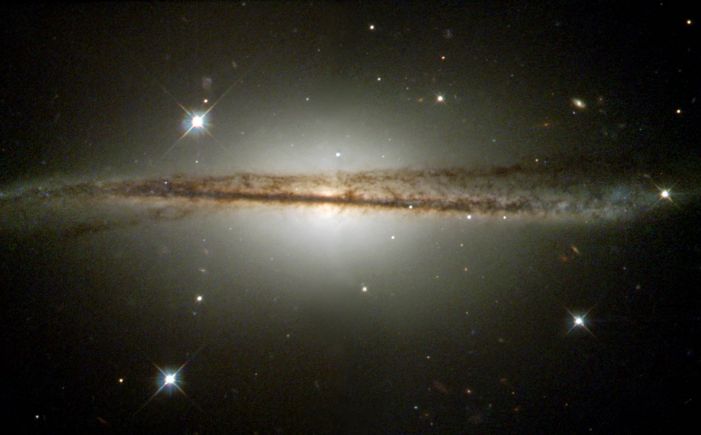
Posted on 06/08/2003 8:27:47 PM PDT by ThinkPlease
Discover the cosmos! Each day a different image or photograph of our fascinating universe is featured, along with a brief explanation written by a professional astronomer.
Hubble Heritage Team (STScI / AURA),
C. Conselice (U. Wisconsin / STScI)
Explanation: How did spiral galaxy ESO 510-13 get bent out of shape? The disks of many spirals are thin and flat, but not solid. Spiral disks are loose conglomerations of billions of stars and diffuse gas all gravitationally orbiting a galaxy center. A flat disk is thought to be created by sticky collisions of large gas clouds early in the galaxy's formation.
Warped disks are not uncommon, though, and even our own Milky Way Galaxy is thought to have a small warp.
The causes of spiral warps are still being investigated, but some warps are thought to result from interactions or even collisions between galaxies.
ESO 510-13 is about 150 million light years away and about 100,000 light years across.
Here is an image showing the amount of warp in our own Galaxy's disk:

So, for example, the galaxy is about 100,000 light years across, with the earth being about 26,000 or so light years from the center. Starting at just outside the Earth's distance, the disk begins to flare, so that at the time you get to the edge of the visible disk at 50,000 light years, you are almost 15,000 light years above the disk, and looking across it. In the opposite direction, the flare exists, but not as impressive. It curves up to about 3200 light years at the edge of the visible disk, but then data by radio telescopes show that the disk curves back DOWN to the plane of the galaxy at almost 65,000 light years from the center. Voila! A galaxy squished like an old sombrero!
Disclaimer: Opinions posted on Free Republic are those of the individual posters and do not necessarily represent the opinion of Free Republic or its management. All materials posted herein are protected by copyright law and the exemption for fair use of copyrighted works.